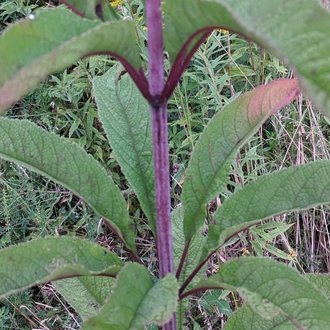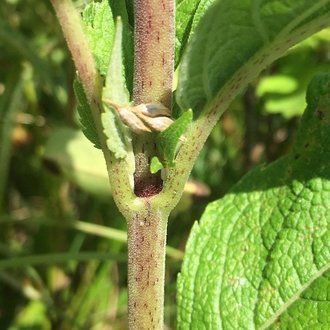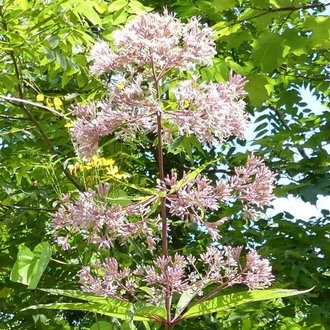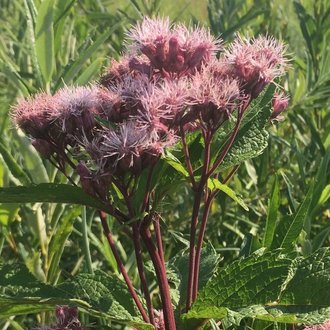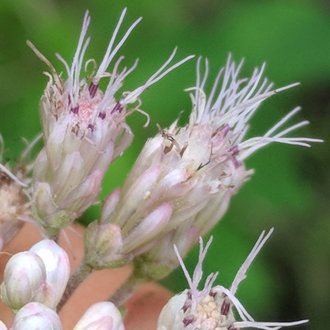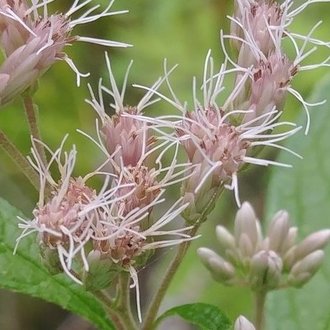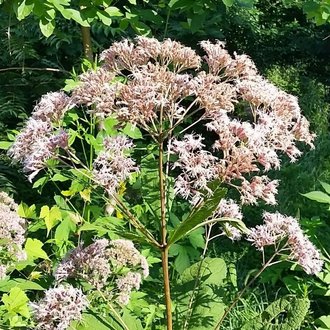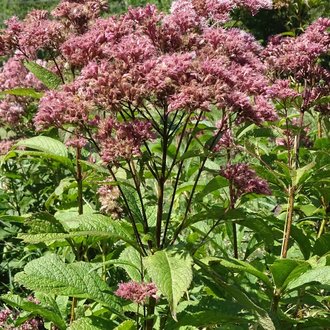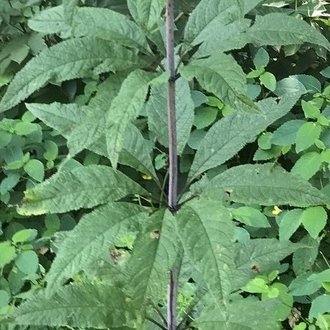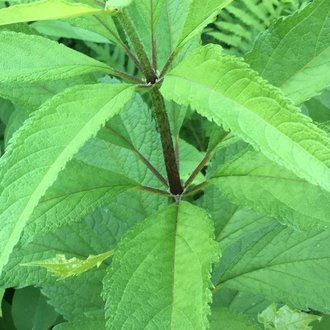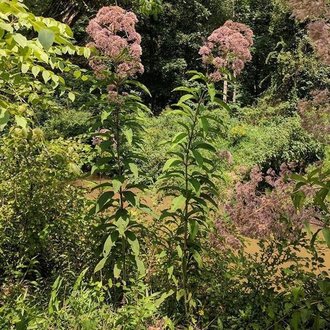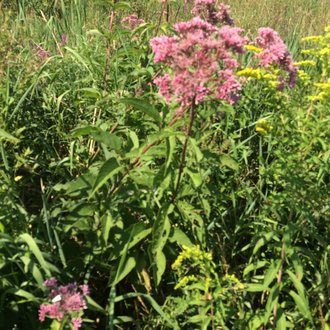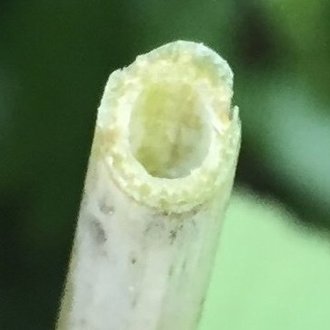Hollow Joe Pye Weed vs Spotted Joe Pye Weed
These two species are sometimes confused in the northeast where their ranges overlap broadly; both are found in wet, sunny habitats. They are usually easily distinguished by a variety of attributes, including stems, inflorescence color and shape, plant height, and number of leaves per whorl. E. maculatum is more likely to be found in intact natural wetlands with mineral-rich soils, whereas E. fistulosum is more likely in disturbed or degraded habitats.
Hollow Joe Pye Weed (Eutrochium fistulosum) | Spotted Joe Pye Weed (Eutrochium maculatum) |
A tall perennial of moist, rich, disturbed sites, native to the eastern U.S.; the tallest Eutrochium. | A perennial of sunny, calcium-rich wetlands, ranging the farthest north of its genus. |
Although emerging spring stems may be spotted, mature stems are purple throughout, and glaucous (covered in a whitish waxy coating.) Photo © Lydia B, CC BY 4.0. | Stems usually spotted purple, but may be purple throughout; rarely glaucous. Photo © D.Perleberg, CC BY 4.0. |
Inflorescence strongly convex. Photo © botanygirl, CC BY 4.0. | Inforescence more flat-topped. Photo © Sean, CC BY 4.0. |
Usually has 4-8 florets per head. Photo © Nate Martineau, CC BY 4.0. | Usually has 9-22 florets per head. Photo © Laura Costello, CC BY 4.0. |
Inflorescence averages a lighter pink color, closer to white. Photo © Baruch Tauber, Public Domain. | Inflorescence averages a darker color, often washed-out and grayish but not as close to white. Photo © Shirley Zundell, CC BY 4.0. |
Leaves usually in whorls of 4-7, occasionally 8. Photo © Mason Heberling, CC BY 4.0. | Leaves usually in whorls of 4-5, rarely more than 5. Photo © Kathleen Houlahan Chayer, Public Domain. |
Averages much taller. Can grow up to 11 feet tall. Photo © Nate Martineau, CC BY 4.0. | Usually 3-5 feet tall, rarely more than 6 feet tall. Photo © Charlie Hohn, CC BY 4.0. |
Stem is hollow, with a large central cavity. Photo © Ken Kneidel, Public Domain. | Stem is either solid or with only a small central cavity. |
References & External Resources
These short lists show only links helpful for ID. For a complete list of references and resources also covering other aspects of ecology, visit the links section of the full article on each plant, which is the first entry here.



